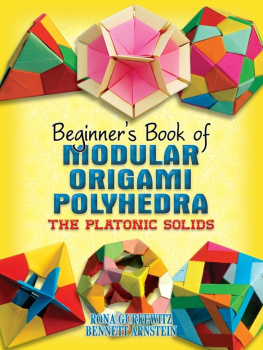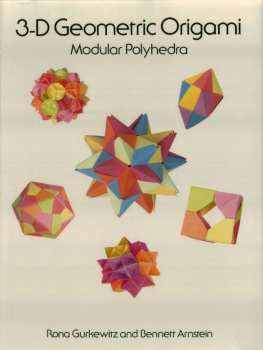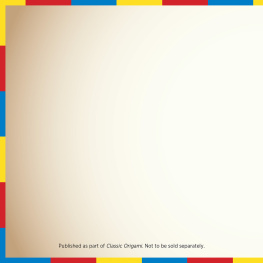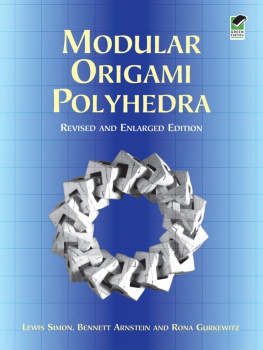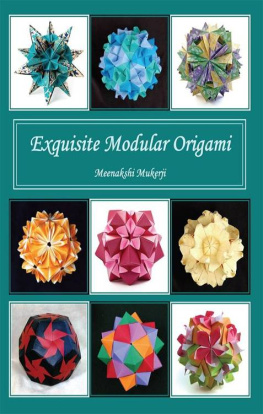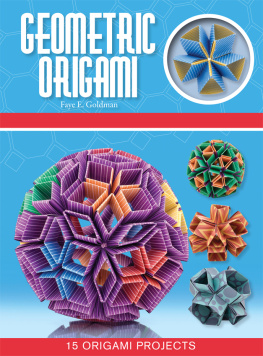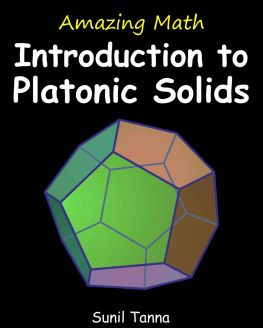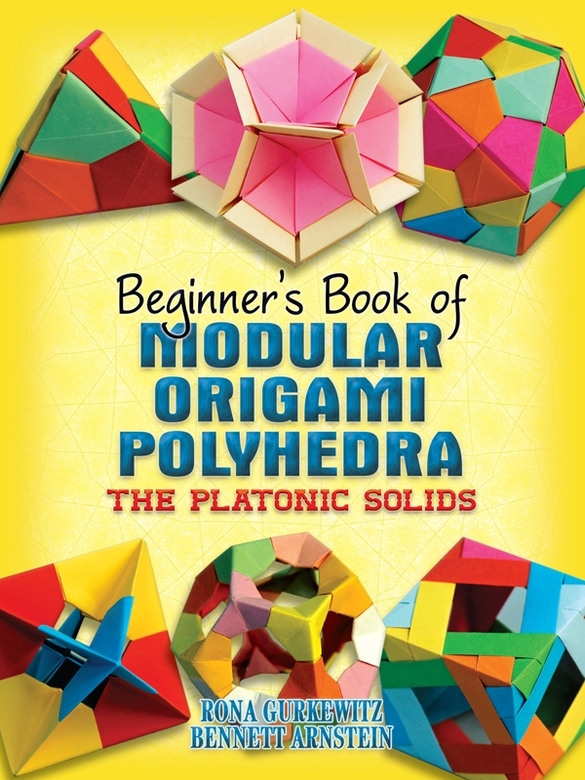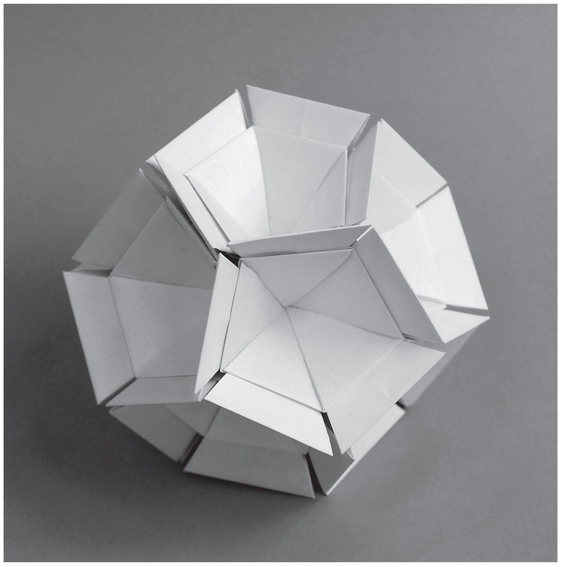Rona Gurkewitz - Beginners Book of Modular Origami Polyhedra: The Platonic Solids
Here you can read online Rona Gurkewitz - Beginners Book of Modular Origami Polyhedra: The Platonic Solids full text of the book (entire story) in english for free. Download pdf and epub, get meaning, cover and reviews about this ebook. year: 2012, publisher: Dover Publications, genre: Children. Description of the work, (preface) as well as reviews are available. Best literature library LitArk.com created for fans of good reading and offers a wide selection of genres:
Romance novel
Science fiction
Adventure
Detective
Science
History
Home and family
Prose
Art
Politics
Computer
Non-fiction
Religion
Business
Children
Humor
Choose a favorite category and find really read worthwhile books. Enjoy immersion in the world of imagination, feel the emotions of the characters or learn something new for yourself, make an fascinating discovery.
- Book:Beginners Book of Modular Origami Polyhedra: The Platonic Solids
- Author:
- Publisher:Dover Publications
- Genre:
- Year:2012
- Rating:5 / 5
- Favourites:Add to favourites
- Your mark:
Beginners Book of Modular Origami Polyhedra: The Platonic Solids: summary, description and annotation
We offer to read an annotation, description, summary or preface (depends on what the author of the book "Beginners Book of Modular Origami Polyhedra: The Platonic Solids" wrote himself). If you haven't found the necessary information about the book — write in the comments, we will try to find it.
Whether or not youre familiar with traditional origami models, youre sure to be captivated by the fun and fascination of creating abstract geometric forms. This book by an expert paperfolder offers a clear, concise introduction to the special techniques for making beautiful, complex polyhedra models.
These 17 projects are based on the classic Platonic solids: the tetrahedron, hexahedron, octahedron, dodecahedron, and icosahedron. Folders at every level of experience, from absolute beginners to old hands, will appreciate the step-by-step diagrams and their detailed views of the models assembly. Additional helpful features include photos of the complete models, background on the Platonic solids, and references.
Rona Gurkewitz: author's other books
Who wrote Beginners Book of Modular Origami Polyhedra: The Platonic Solids? Find out the surname, the name of the author of the book and a list of all author's works by series.

